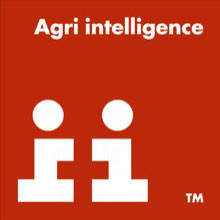Anthelmintic resistance is now considered one of the most important factors regarding worming regimes in the ewe flock. As a result, one point of discussion is restricting the number of ewes treated in the flock to help avoid resistance.
Worming ewes prior to lambing has in the past been common practice on farms. The reason for this is that ewes show some relaxation of the immune system as they near lambing, resulting in worms producing a greater number of eggs which then pass out onto the pasture via the dung. These pastures, when grazed by lambs in the spring, can cause high worm numbers. The optimum time for this high worm count in ewes is approximately 2 weeks prior to lambing and will continue 6 weeks post lambing.
Fit and healthy ewes with a correct body score condition have a higher immune response to most worm species and consequently these ewes are known to supress worm species in the gut, resulting that only a few survive causing fewer eggs shed in the faeces and less pasture contamination.
Ewes with a lower body condition score, younger ewes, or ewes bearing triplets, are the ones under most pressure in late pregnancy and produce more eggs. It is recommended that these ewes are identified as in need for treatment. Initially a Faecal Egg Count (FEC) should be undertaken to establish the need for treatment and if a wormer is advised a further FEC can then be taken post worming to ensure that there are no resistance issues.
Anthelmintic resistance is described as internal parasites (worms) being resistant when it can survive exposure to the correct dose (according to bodyweight) of a wormer. The resistance can then be inherited by the next generation of worms and numbers will increase under favourable weather/pasture conditions.
As we approach April to June months, Nematodirus will be the one parasite causing problems in spring grazing lambs. Nematodirus occurs when lambs grazing pasture the previous year shed worm eggs and, depending on favourable weather conditions, these hatch the following spring and the larvae are ingested by the spring lambs. High levels of larvae can cause significant internal damage to the gut. An FEC egg count would be extremely helpful here to ascertain the levels of Nematodirus eggs present. Nematodirus eggs are easily identified in an FEC from other worm species present.
Always remember best practice:
- Choosing the correct product
- Choosing the correct time to treat
- Choosing the right animals to treat
- Choosing the correct dose according to bodyweight
Resistance has been identified on most farms to group 1 drenches (White), but this group can still be an advantage for spring dosing of lambs for Nematodirus. This occurs when overwintered eggs from lambs grazing pastures the previous season will, depending on favourable weather conditions, hatch and the larvae is ingested by the spring lambs.
A faecal egg count would be extremely helpful at this time, because Nematodirus eggs are easily identified from the other worm species present.
Spring lambs grazing new leys which have not been grazed the previous autumn will avoid this initial challenge.

For more information or advice, particularly regarding continuing worming programmes, contact your Agrii advisor or email David Pryce at david.pryce@agrii.co.uk.


